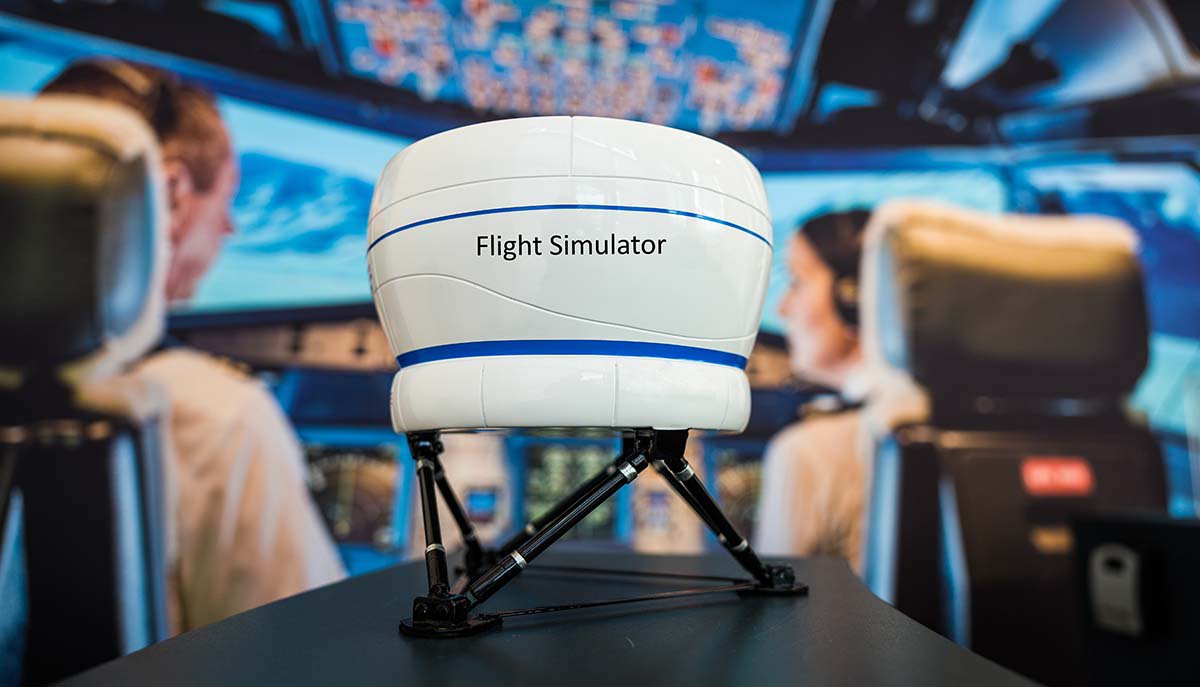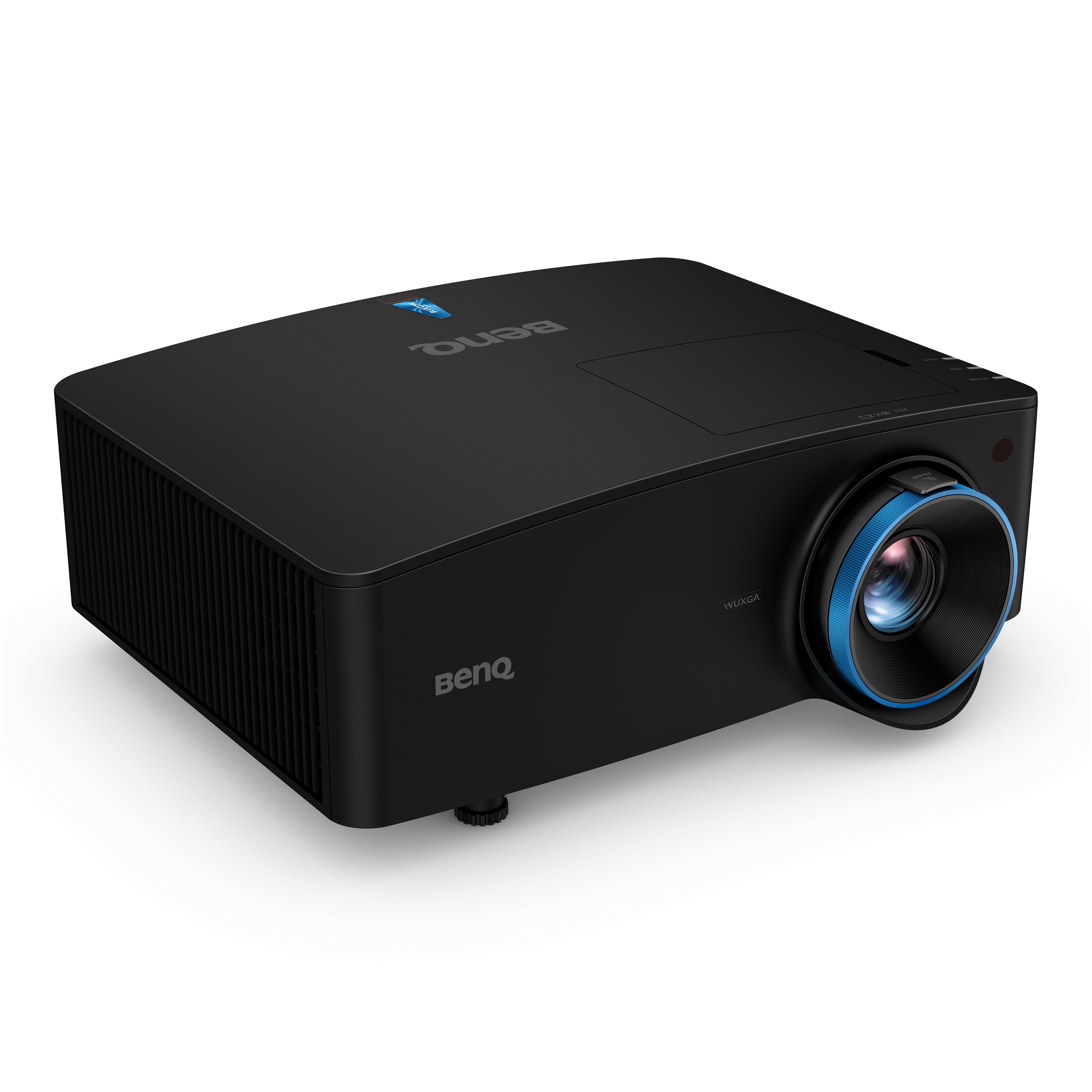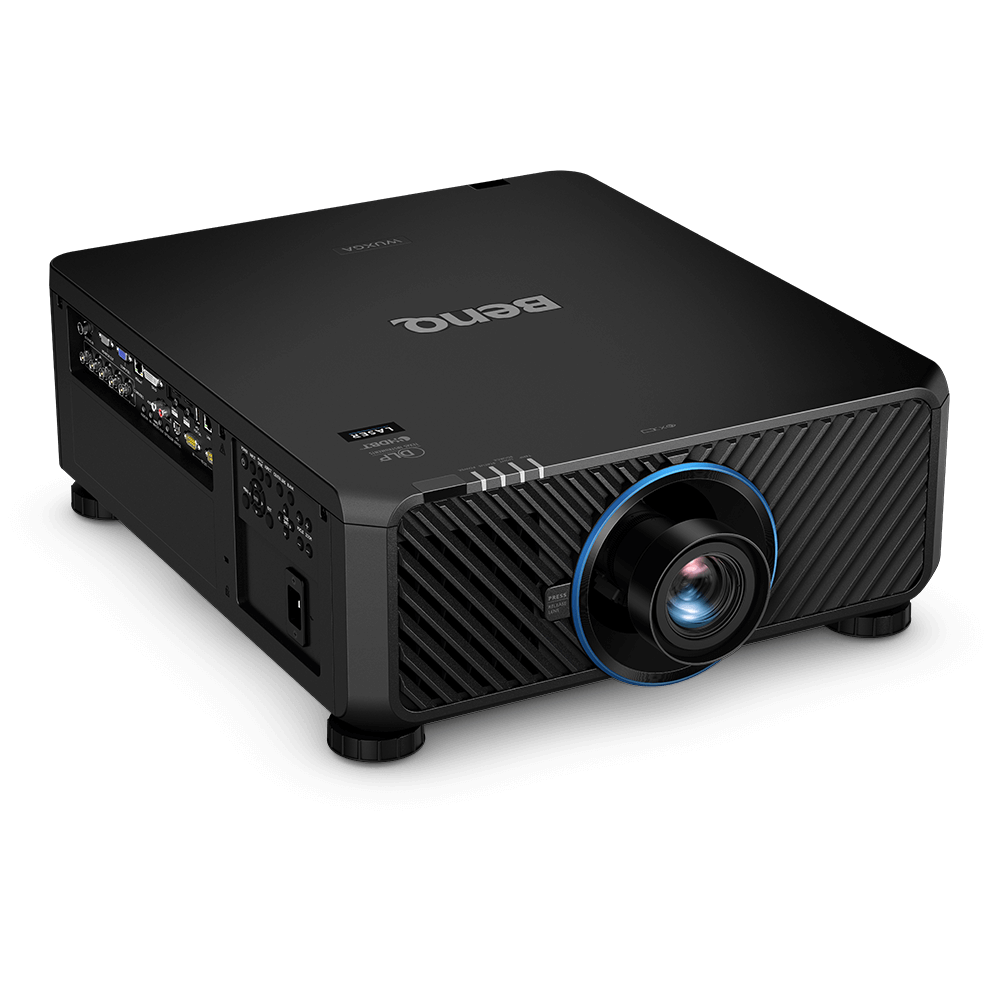How Lower Latency Creates a More Effective Flight Simulator
- BenQ
- 2021-11-25
The evolution of modern flight simulators has been one of the biggest contributors to airline safety in recent decades because by simulating the operating environment of a cockpit, they allow pilots to train and practice how to properly respond to any type of emergency situation. With a high-end Full Flight Simulator (FFS) the effectiveness of the training is further boosted by mounting an actual cockpit onto a Stewart platform with hydraulic jacks which work in tandem to create the movements and rotations – based on commands from the simulator’s computer system – that simulate the feel of mid-air flight. All of this is complemented by a highly realistic wide-angled video system, or projector, that reproduces the visuals outside the cockpit windows.

Why is There Latency in a Flight Simulator’s Visuals?
An FFS’s ecosystem consists of the following four elements: an (1) operating system, a (2) central processing unit, a (3) motion system, and a (4) video system. When in use, signals that result from the pilot’s actions with the control column and rudder pedals are sent to the central processing unit for processing. On average, the time it takes from the moment the pilot receives his orders to when his or her body reacts varies from 300 to 500 milliseconds. This gap in time, regardless of whether it happens in a real airplane or a simulator, is a natural phenomenon that can be chalked up to the pilot’s own reaction time and is not due to the mechanics or design of the equipment. But the source of any additional delay above and beyond this span of time, can only be traced to the latency between the actions of the simulator and the resulting visual response from its video system.

The latency happened in each process when a pilot flying in a simulator system
Low Latency in Visual Systems
Early flight simulators used visual systems which featured small-scale topographical models that a camera would “fly” through – based on the pilot’s controls – to create the images or photos that would be then shown on the screen in front of the pilot (see the image below). Obviously, this type of simulator severely limited the extent of simulation a pilot could train under, not to mention not being able to address, even in the slightest way, the issues of latency/lag discussed above.
A crucial aspect of having a successful flight simulator is its ability to provide the pilot with immediate visual feedback to their commands in order to fully engage them in the simulated environment so that they can have a more effective training session. This makes having a video system that features low latency an indispensable piece of the puzzle for flight simulators, more so than with other types of simulators.
To put this concept into numbers, the human body’s visual system takes less than 50 milliseconds to transmit a visual signal to the brain, which means that the shorter the delay between when a video system converts a video signal into an image, the better. For example, with 60Hz video (i.e., video at 60 frames per second) a delay of only 4 frames actually means a 66.67-millisecond delay when converted into actual time. This type of delay will prohibit the simulator’s visuals from matching up properly with the actions of the pilot, which would in turn affect the pilot’s ability to make the best judgments. Due to this fact, the majority of modern flight simulators require a video system with a latency time of roughly 20 to 50 milliseconds.
BenQ’s Low Latency Technology
BenQ’s line of projectors for simulators are designed with TI DLP chips which feature Frame Rate Conversion (FRC) technology and a Formatter (FMT) memory buffer that allows it to ensure a stable signal. Furthermore, to meet the need for low latency in a variety of applications, the projectors include a low latency video mode that can achieve a latency of just one frame per second. Using BenQ’s LU960ST broadcasting a video in a 1080P 60Hz format as an example, this represents only a 16.67-millisecond lag (1 sec. / 60 frames = 16.67ms) for a video system that utilizes the LU960ST, which is 10 milliseconds faster than projectors produced by other brands for the simulator market, giving the pilot that much more time to react to their surroundings.
Conclusion
BenQ has been committed in recent years to releasing the fastest projectors for the simulator and gaming market. For simulators, this means ultra-low latency to ensure a higher degree of realism permeating each session and a greater sense of control for the pilot.
You may also like
-
Trends & Knowledge
Why Depth of Field Important in a Flight Simulator
This article explains why depth of field is important especially on a flight simulation dome projection and what is the best DOF value.
2021.11.12 -
Trends & Knowledge
How White Balance Adjustment Enables the Immersive Quality of Simulation Projection
Deploying multiple projectors to create a realistic wrap-around image canvas demands simulator installers conquer the challenge of White Balance Adjustment to achieve a seamless image ─ BenQ has the answer with its Optical and Colour Algorithm.
2021.08.16 -
Trends & Knowledge
How White Balance Calibration Helps Your Flight Simulator
This article gives you more information about BenQ's unique white balance pre-calibration technology and how it helps in your flight simulator installation
2021.11.25


